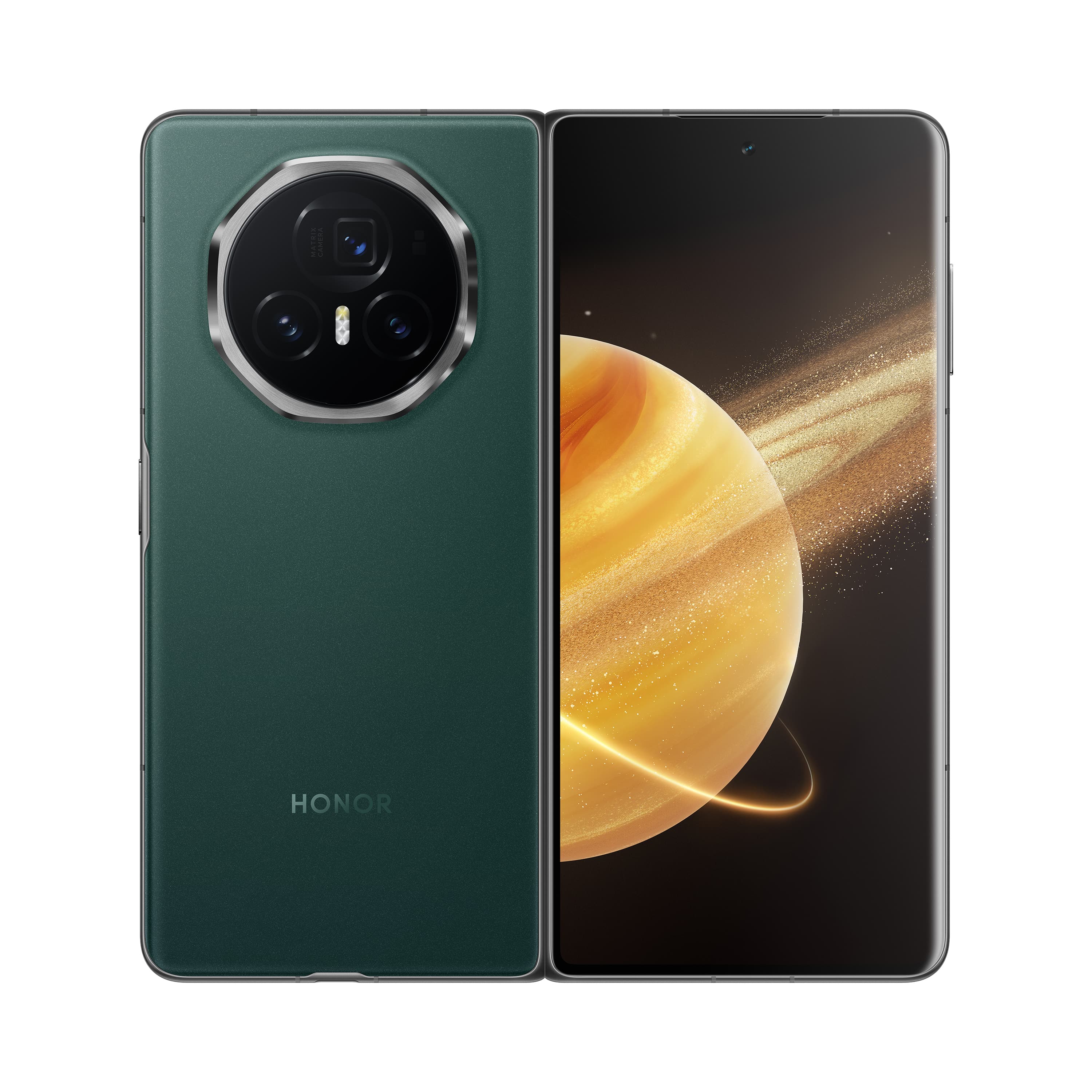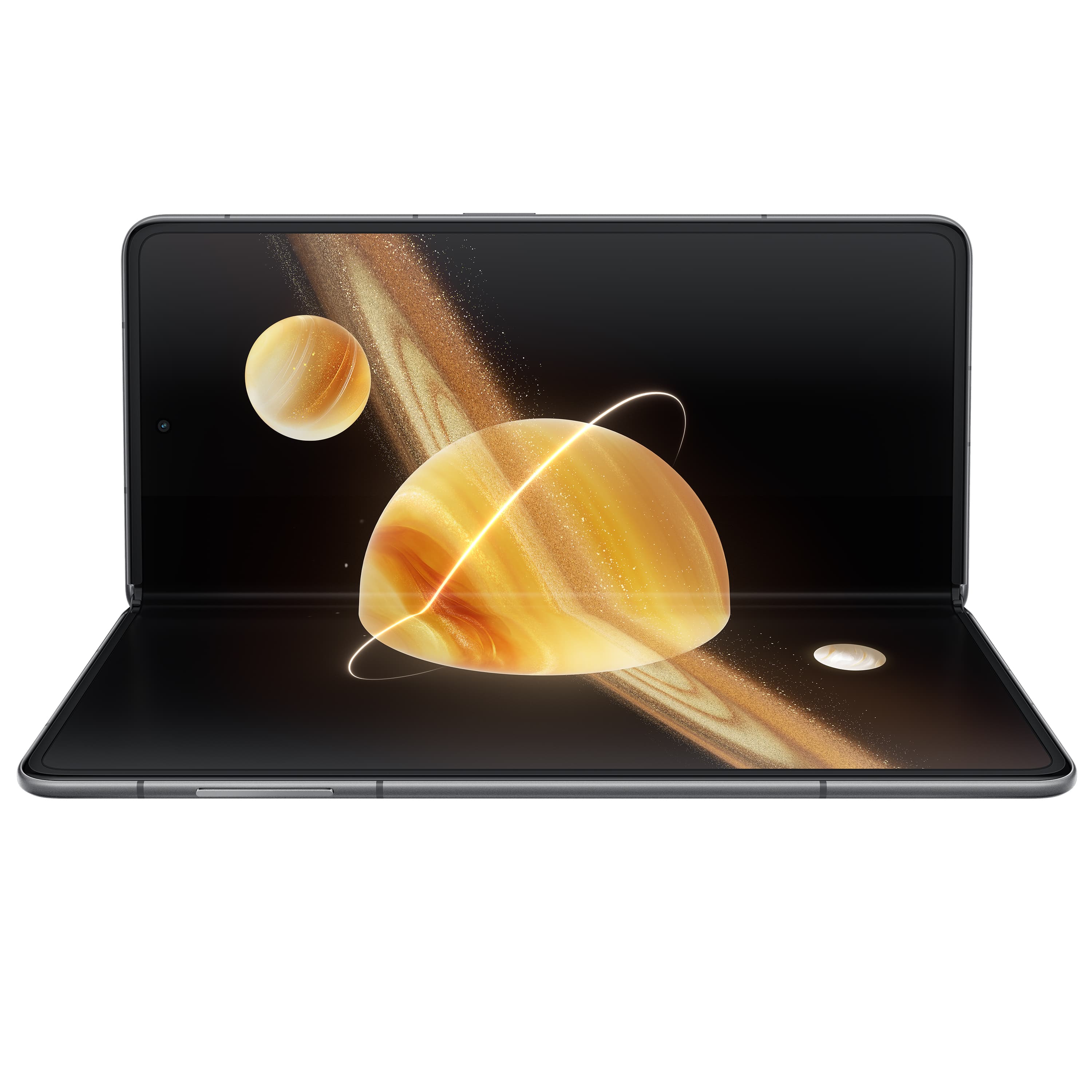Honor Magic V3 has reached the stage where the thickness of the folded puzzle practically does not differ from a classic smartphone. When folded, it is only 9.2 mm thick and weighs only 226 grams. Not only at the time of the introduction, but also at the time of writing this review, it is the thinnest inward folding smartphone in the world. The phone has three rear full-fledged cameras, a powerful chipset, and the manufacturer declares water resistance according to the requirements of the IPX8 standard. The package includes a plastic cover for the rear wall, which has a metal flip-out border around the octagonal camera platform, which you can use, for example, when watching video on the external display in landscape mode.
The Super Steel hinge should withstand 500,000 opening and closing cycles, or so the manufacturer claims. And it reliably holds in any position. The designers also handled the buttons very well. When closed, they are all on the right side, when open there are two volume buttons on the left side and a power button with an integrated fingerprint reader on the right side. Despite the fact that the button is very narrow, recognition is fast and reliable.
The external display has a resolution of 1060 × 2376 pixels and an aspect ratio of 20:1. Since this display will be used to quickly obtain information, it has a maximum brightness of up to 5000 nits, which guarantees good readability even in direct sunlight. When opened, the internal display has a diagonal of 7.92 inches and a resolution of 2156 × 2344 px. Subjectively, the image on both displays looks brilliant, with faithful, slightly more saturated colors. The external display is protected by durable nano-crystal glass. The inner flexible display is protected by a film. You can feel the curl in the bend area rather than see it. Eye fatigue is eliminated by dynamic dimming and reduction of the harmful blue component of light. I was intrigued by the AI Defocus Display feature, which uses AI to defocus the display to reduce the risk of transient myopia for people who spend a lot of time looking at the display up close.

The electronic heart of the smartphone is the Qualcomm Snapdragon 8 Gen 3 chipset. It has eight cores, while the most powerful core, intended for the most computationally demanding tasks, runs at a clock frequency of 3.3 GHz. AI, which is also involved in image processing during photography and filming, uses the NPU (Neural Processing Unit). GPU Adreno 750 is in charge of graphics generation.
At the same time, the processor is relatively energy-efficient, so the battery with a capacity of 5150 mAh can easily last one and a half days of normal use, and even two days with more conservative use. The charger is not included. The maximum charging power through the USB-C port is 66 W. 50 W wireless charging is also supported. Of course, there is stereophonic sound, but it does not excel in the area of low tones. It is logical because the thickness of both parts is only 4.7 mm, so for more demanding listening I recommend headphones or a bluetooth speaker.
The foldable smartphone is equipped with a triple rear camera, which includes a 50 Mpx main camera, a 40 Mpx ultra-wide-angle camera and a 50 Mpx periscopic telephoto lens with 3.5x zoom. Both the main camera lens and the telephoto lens have optical stabilization. The ultra-wide-angle lens has automatic focusing and you can also use it for macro shots of small objects or close-up details. The advantages of the large internal display can be used when composing a shot.
There are two front cameras. One is in the shot of the external and the other in the right part of the open internal display, which enables video calls with both closed and open smartphones. Both cameras have a sensor with a resolution of 20 Mpx and a lens with an aperture of f/2.2. You can also use the rear cameras for selfies. Just activate the rear selfie function when the smartphone is open. You will then see a preview of the shot on the external display. This mode is great if you want to take a photo with a larger group of people or capture more of the background behind you. The user thus has photographic equipment without compromise, comparable to flagship photomobiles. I have to praise the quality of the images not only during the day, but also in problematic lighting conditions, for example in backlight and also in the evening and at night. The colors are a bit oversaturated – but that’s exactly the kind of shots that reap success on social networks.

The Magic OS 8.0-1 user interface brings interesting software innovations that allow you to use the potential of a large, spread-out display. With a model of this class, of course, the implementation of AI cannot be missing. Magic Text allows you to extract text from an image, while Magic Portal allows you to move a block of text to the right into another application, such as Notes.
PROS, CONS:
+ Design, small thickness, excellent cameras, powerful processor, battery life
– Nothing important
PARAMETERS:
Processor: 4 nm Qualcomm Snapdragon 8 Gen3 processor (1× 3.3 GHz Cortex-X4 + 3× 3.2 GHz Cortex-A720 + 2× 3.0 GHz Cortex-A720 + 2× 2.3 GHz Cortex-A520) , GPU Adreno 750; memory 16 GB RAM; 512 GB of storage space; display: folding LTPO OLED 7.92″, resolution 2156 × 2344 px, 403 PPI, refresh rate max. 120 Hz, HDR10+, 1800 nits (peak), front LTPO OLED, diagonal 6.43″, resolution 1060 × 2376 px , 120 Hz, HDR10+, 5000 nits; rear camera: main wide-angle camera 50 Mpx, OIS, f/1.6, ultra-wide-angle 40 Mpx, f/2.2, focal length 16 mm, periscopic telephoto lens 50 Mpx, 3.5× optical zoom, OIS, f/3, 0, focal length 90 mm; front camera 20 Mpx, f/2.2, cover camera 20 Mpx, f/2.2; battery 5150 mAh; charging: wired 66 W, wireless 50 W, reverse wired 5 W; connectivity: 5G, LTE, Wi-Fi 7, Wi-Fi Direct, bluetooth 5.3, A2DP, LE, aptX HD; operating system Android 14, Magic OS 8.0.1; dimensions: folded: 156.6 × 74.0 × 9.2 mm, unfolded: 156.6 × 145.3 × 4.35 mm; weight: 226 g
Cena: 1999 EUR
Source: www.nextech.sk


